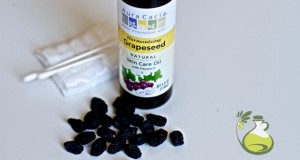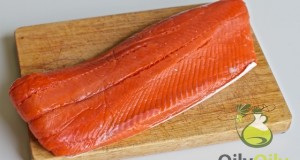
Photo credit: wikimedia
What is canola oil? Some dietologists recommend it, some people warn against its use. Canola oil has become more and more widespread on the store shelves and in the recipes. There are many opposite opinions about canola oil. So what is canola oil made from? Where does canola oil come from?
Contents
Is canola oil vegetable oil?
According to Wikipedia canola oil is edible oil made from the canola plant, a cultivar of rapeseed. Canola comes from the Brassica botanical family. Is canola oil the same as vegetable oil? Yes. Cauliflower, broccoli and cabbages are from this same family too. Canola was cultivated from rapeseed in Canada in the 1970s. Rapeseed is high in erucic acid which makes it toxic for people. The Canadian breeders have grown a variety of rapeseed with a low (less 2%) content of erucic acid and called it Canola (Canadian Oil Low Acid). The United States Food and Drug Administration recognizes canola oil as safe for human consumption.
SEE ALSO: Is Corn Oil the Same as Vegetable Oil?
How is canola oil extracted?
Canola seeds after harvesting are directed to a special facility. They are crushed there to receive the oil from the seeds. It is in average 43%. This oil is always refined. Usually it has a light texture, pale golden color and neutral taste. Canola meal received after the oil extraction contains high protein and is used for animal feed.
When you buy canola oil search for expeller pressed canola oil. It means that this oil was mechanically pressed, without chemical solvents. This oil may be more expensive, but it guarantees that no solvents remained in canola oil.
Canola oil ingredients
Canola oil has a highly beneficial composition. It is low in saturated fat and high in monounsaturated fat. Canola oil nutrition profile is:
- 61% of monounsaturated oleic acid (omega-9 fatty acid)
- 21% of polyunsaturated linoleic acid (omega-6 essential fatty acid)
- 11% of alpha-linolenic acid (omega-3 essential fatty acid)
- 7% of saturated fatty acids
- 4% of palmitic acids
- 2 % of stearic acid
The balance between omega-6 and 3 essential fatty acids is very beneficial for health.
Types of canola oil
Not all canola oil is the same. There are several varieties of canola oil, that is why people are often lost in the information around the oil and cannot decide on whether it is beneficial or dangerous.
RELATED: Benefits of Canola Oil vs Olive Oil
Organic canola oil vs. genetically modified canola oil
Conventional and organic canola oils differ in genetic modification. Some people believe that canola oil is extracted from only genetically engineered seeds and that it is all GMO. It is not true. Rapeseed was modified into canola with the help of selective breeding. It has nothing in common with genetic modification. Read more about canola oil and GMO issues.
Genetically modified canola was introduced in 1995. Canola tolerant to Round-up, a herbicide, was grown in Canada. It was a case of genetic engineering. The seeds resistant to herbicides allow to apply herbicides on the canola fields and get much more crop yield. 90% of the crop grown in Canada in 2009 was genetically modified as Wikipedia states. 87% of the US canola was herbicide-resistant in 2005.
Organic canola oil is derived from canola seeds that were NOT genetically modified to resist herbicides.
High oleic canola oil
There are classic and high oleic canola oils on the market. Classic canola oil is more widespread and sold everywhere in the United States. When we talk about canola oil we mean classic canola oil. High oleic canola oil as its name suggests contains a higher quantity of oleic acid. It possesses 70% of it in comparison with 61% in classic canola oil. What is the benefit of the high content of oleic acid? High oleic canola oil is used mainly in commercial production of food. It is very stable under high-heat conditions. Its smoke point is several degrees higher (475°F) than classic canola oil has. So it is healthier for frying, for example French fries, (find out how to dry with canola oil) and for oven cooking.
 Oilypedia.com – Benefits And Uses Of Supplemental and Essential Oils
Oilypedia.com – Benefits And Uses Of Supplemental and Essential Oils 


